February 2015. OK, it was a bit out of character for me. I was in New York City, attending the second day of the annual Westminster Kennel Club Dog Show. Westminster is the oldest and most prestigious dog show in the US, although not the largest. Think of it as anthrocynological research. Or cynanthropology. Or whatever the study of humans-with-dogs would be called. Cynology would be the scientific study of dogs, from the Greek root word “cyn,” “dog”; anthropology is of course the scientific study of our own species. So you can hybridize the two as you choose.
Fashion Week in New York was just starting at the same time, and dogs of breeds I’d either never seen before or didn’t recognize were whirling through the lobby of the Manhattan Affinia Hotel with their owners or handlers, accosted by young models in head-turning outfits who wanted to pet them and snap selfies. Over at the Hotel Pennsylvania, the hub of dog show action, the floor of a large room in the basement was covered in sawdust, which for a fee was available as an indoor doggy potty. Another large room was given over to grooming tables, where after-bath dogs were blow-dried and coiffed to perfection. What flashed in my mind was the interstellar bar scene in the movie Star Wars. Although the diversity of dogs was semi-close to the diversity of cosmic characters in that space cantina, and the diversity of human owners and handlers was stunning too, this was all happening here on our Home Planet, in the Big Apple.
Although I just said it was “a bit out of character for me,” I knew that my reason for going to Westminster had deep roots, going back to the beginnings of the interest in evolution, animal behavior, and genetics that eventually led me to my doctoral research. It was, in fact, a long looping back to explore my curiosity about the behavior and evolution of dogs, and the coevolution of dogs and humans.
The American Kennel Club (AKC) recognizes somewhere around 177 breeds of dogs, classified into seven “groups”: herding, hounds, non-sporting, sporting, terrier, toy, and working dogs. A bunch of breeds are in what you might call AKC “limbo,” or “purgatory,” awaiting acceptance, or not, to be classified as accepted breeds. In limbo now are the Azawakh, the Lagoto Romagnolo, and the Peruvian Inca Orchid, among others. The Fédération Cynologique Internationale recognizes 339 breeds, classified into ten groups – much more inclusive and international than the AKC.
Chris was here from California with her husband Mark to show Cooper, a Siberian Husky. She usually shows Old English Sheepdogs at Westminster, but was giving Huskies a try. Our conversation drifted to the evolution of these working breeds, huskies, and sheepdogs. Ideally, she said, the competition among breeds would somehow reflect and test what they were bred for – guarding, herding, hunting, etcetera. But now many of the “occupations” of working dogs are hobbies at best, if not altogether lost, and the Westminster judging is mostly about physical conformity to a breed “standard,” with some factors of personality and showmanship mixed in.
Chris told me about a time when she put her Old English Sheepdog, Nikki, who had never seen sheep before, in a pasture with some sheep. There were three sheep in the field, Chris said, and when one of them began to wander off, the dog appraised the problem, and then made exactly the right moves to reunite the group. Somehow Nikki innately knew how to keep sheep together even though it had never seen a sheep in its life.
My personal encounter with the domesticated subspecies of the wolf started in my young teens, when my parents decided that since we finally had a house with a fenced yard, we could get a dog. We went to the Santa Fe Animal Shelter, and wandered around looking at the puppies available for adoption. One pen held a litter of what looked like black Labrador Retrievers. A happy, friendly male puppy came over and licked our hands through the chain link fence. My mom signed the papers, and we brought “Blackie” home in our 1955 Dodge. I remember my five-year-old sister being terrified of the overexcited, exuberant puppy, who was chasing her around the back seat of the car trying to lick her. Even then it was clear that Blackie chose us and communicated his desire to join our family, and we chose him because of that behavior. Recent speculation among scientists who study the domestication and evolution of dogs is that the first wolf-dogs probably chose our species as evolutionary partners too, because of the way they interacted with our hunter-gatherer ancestors through their behavior.
As an undergraduate in college I took a course on Animal Behavior, and another on Behavioral Genetics. The textbook in the Animal Behavior course was by John Paul Scott, who frequently cited examples from two decades of his research on the behavioral genetics of dogs. Beginning in 1946, Scott had studied the genetics of dog behavior with John L. Fuller, at the Jackson Laboratory in Bar Harbor, Maine. In 1965 they summarized this research in their book Genetics and the Social Behavior of the Dog. Away from home at college, pondering big questions, I missed my dog-friend Blackie.
Scott and Fuller were really just continuing a line of inquiry began a century earlier by none other than Charles Darwin. Darwin’s relationship with dogs throughout his life was a critical ingredient in his theory of evolution by natural selection. They were used as examples in On the Origin of Species (1859), The Descent of Man, and Selection in Relation to Sex (1871), and Expression of the Emotions in Man and Animals (1872). Dogs provided a model of how a species could be shaped by “selection” – in their case, by the choices of humans to breed them for various purposes, partly related to their behavior. Not only their behavior related to things that helped us, like hunting and herding, but more fundamentally their ability to communicate with us.

Image from Darwin’s Expression of the Emotions in Man and Animals (1872): “Dog in a humble and affectionate frame of mind.”
Darwin’s use of dogs as examples of how a species can be physically and behaviorally shaped by selection was grounded in his belief that animals differed from humans in degree, not in kind – that is, that their selection and evolution could provide a model for that of our own species. This view poses profound existential questions for us today, just as it did in Darwin’s time.
Dogs are more human-like than any other species, including our closest evolutionary relatives, bonobos and chimpanzees. In a 2005 paper titled “Human-like social skills in dogs?,” Brian Hare and Michael Tomasello wrote: “Domestic dogs are unusually skilled at reading human social and communicative behavior – even more so than our nearest primate relatives… Recent comparisons between canid species suggest that these unusual social skills have a heritable component and initially evolved during domestication as a result of selection on systems mediating fear and aggression toward humans.” The cross-species communication of humans and dogs, undoubtedly the result of human-dog coevolution, seems to be unique among all of Earth’s species.
The convergence of social communication between humans and dogs is the result of tens of thousands of years of coevolution – just how long is currently a matter of scientific speculation and research. Morphological and genetic evidence suggests that domestic dogs may have diverged from wolves in different places at different times beginning as long as 135,000 years ago. A 2013 paper based on whole genome sequencing of grey wolves and various breeds of dogs suggests that their ancestors diverged around 32,000 years ago. Either way, our two species have been interacting and influencing each other’s evolution and behavior for a long, long time. The behaviors of tracking, hunting, guarding, and herding that humans have emphasized in creating specialized breeds derive from the repertoire of behavior of their pack-hunting wolf ancestors. Humans and dogs are both fundamentally “tribal” – intensely loyal to their group or pack, and predisposed to be suspicious, hostile, and aggressive toward strangers – members of other tribes or packs.
Watching the showing of all of the diverse standard breeds at Westminster, I thought about the most amazing dogs I have ever seen, typical village dogs from the coast of central Mozambique. In 2012 I spent a few days in Angoche, a small town in Nampula Province, as part of a biodiversity assessment for USAID. John, the director of a community-based conservation program sponsored by the World Wildlife Fund and CARE International there, had two of these local dogs. Duka and Lila were the most alert, smart, and social dogs I’d ever seen. John describes them as “great dogs, if a little individualistic, independent and wild.” I can relate completely. Duka and Lila are my kind of dogs.
Some dog enthusiasts in South Africa call traditional dogs like Duka and Lila “Africanis” dogs. They argue that “breeds” is a Eurocentric concept, and that all of the aboriginal dogs in sub-Saharan Africa are locally adapted varieties of a common indigenous dog. The Basenji breed, recognized by the American Kennel Club, is clearly related to, or derived from, these traditional African village dogs. In a way, their behaviors and traditional uses cut across several of the “breed” categories of European and American classification: they help their human companions in multiple ways, by guarding, tracking, hunting, and sometimes herding.
I know I’m jumping around here, but bear with me – I think it all connects. To parody one of my favorite lines from the poet Robert Browning, “Ah, but a dog’s bark should exceed his bite, or what’s a heaven for?”
Now I need to try to explain my reason for saying that my trip to Westminster was a decades-long ramble, from my first family dog, to Darwin, and on to my doctorate, and, arguably, to my entire career. Here is my sense of the connections, in a nutshell, between my circuitous career path and my recent visit to the Westminster Dog Show: I was interested in behavioral genetics, and the evolution of behavior, because I wanted to – and still want to – understand my own species and our unique relationship to our home planet. We humans, because of our behavioral evolution, are the dominant species on Planet Earth, and our dominance has created the conditions for our own demise.
Is animal behavior adaptive? To what extent is it controlled by genes and to what extent by environment? These were the questions that were swirling in my mind as a college undergraduate reading Scott and Fuller’s studies of the behavioral genetics of dogs. Is human behavior adaptive? Will the innate behavioral tendencies of our human species – bred into us for a few million years, before we learned how to dominate the planet with our agriculture, burn fossil fuels, and create nuclear weapons – save us, or kill us? At Westminster these questions were lurking just below the surface.
This year at Westminster “Best In Show” was a cute beagle, “Miss P”. Darwin gathered his evidence for evolution on his around-the-world voyage aboard the HMS Beagle – and yes, the ship was named after the breed. Go figure. I’m still pondering exactly how it all connects, although I know it does … It must, somehow…
Thanks to John Guernier for photos of his dogs Lila and Duka.
Related links and sources:
- Westminster Kennel Club Dog Show 2015
- Space Cantina scene from Star Wars Episode IV: A New Hope
- American Kennel Club Dog Breeds
- Animal Behavior. J.P. Scott. 1972.
- Genetics and the Social Behavior of the Dog. John Paul Scott and John L. Fuller. 1965.
- The Heir of the Dog: Canine Influences on Charles Darwin’s Theories of Natural Selection. David Allen Feller. 2005
- Darwin’s Dogs: How Darwin’s pets helped form a world-changing theory of evolution. Emma Townshend. 2009.
- Human-like social skills in dogs? Hare and Tomasello, 2005.
- Canine Behavioral Genetics. Spady, et al. 2008.
- The genomics of selection in dogs and the parallel evolution between dogs and humans. Wang, et al., 2013.
- Africanis dogs
- “Ah but a man’s reach should exceed his grasp, or what’s a heaven for?” from Andrea del Sarto, 1855, by Robert Browning
- Best in Show movie

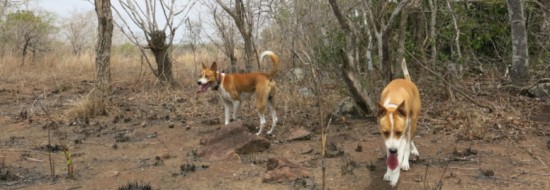
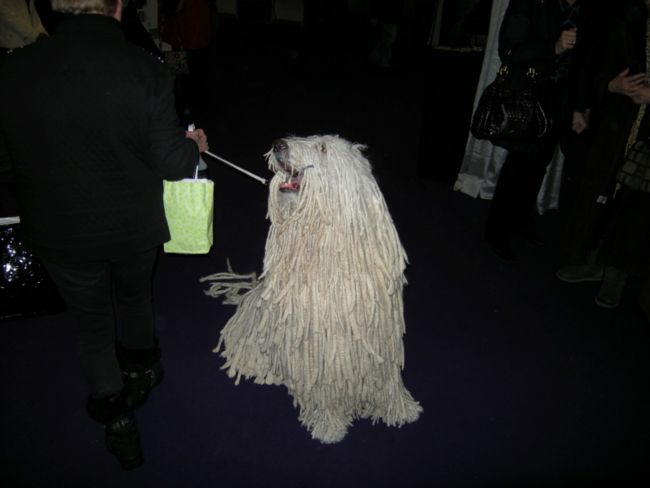
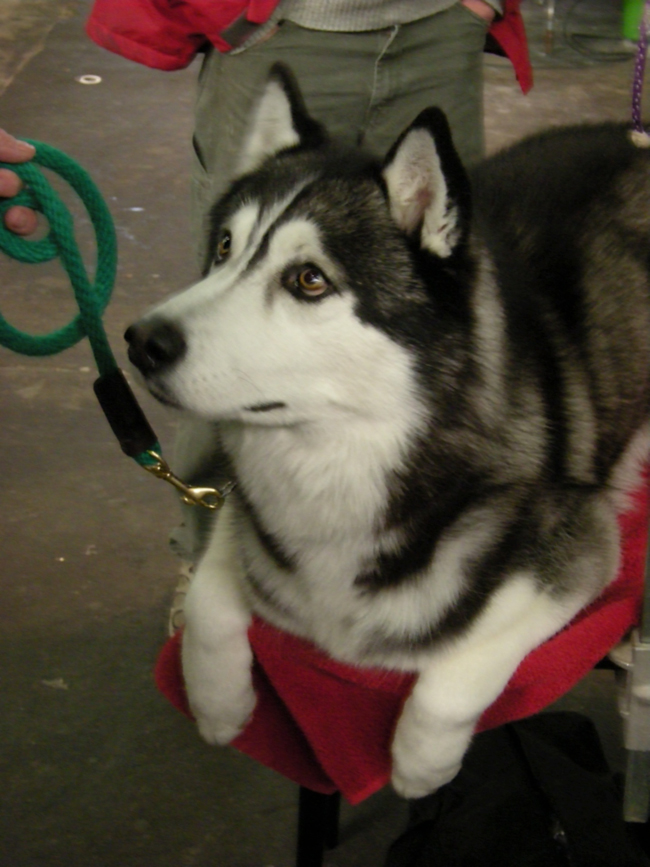
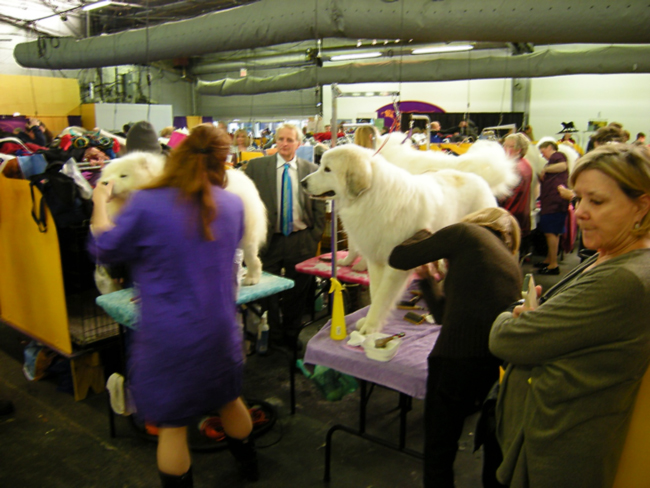
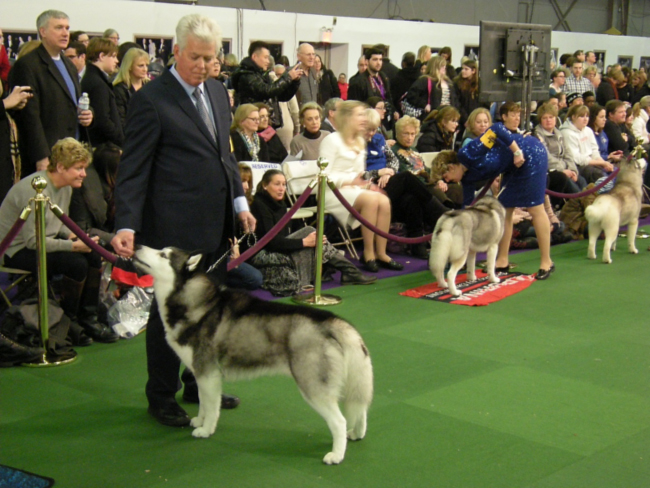
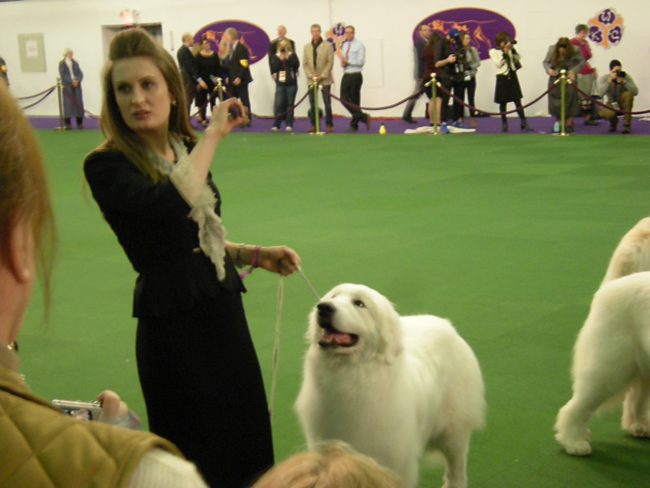

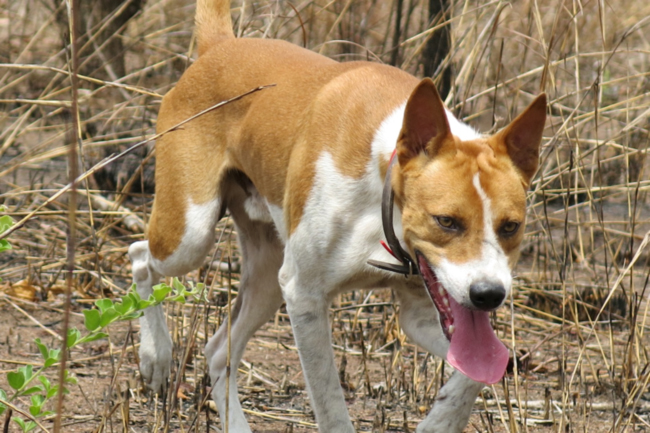



April 1, 2015 4:08 am
Thank-you for coming to the show. Loved your article!!! My Beagle Tracy’s dog Spencer is Miss P’s father. Small world!!!
April 4, 2015 3:12 pm
Thanks to all of you who responded by email to my “dogs blog” with comments and photos. The blog proved to be a bit of “anthrocynological” research of its own – generating more comments than any other posts, with only monarch butterflies a close second. So, we really are dogs best friends!
Chris pointed out that her Old English Sheepdog who demonstrated his innate herding strategy was Casey, not Nikki. John sent another photo of Duka and Lila looking down at the street from the roof of his house in Ilha de Mozambique. A friend wondered why I didn’t mention his Bernese Mountain Dog, now gone to that great bone pile in the sky, whom he described as “one of the nicest people I ever knew.” Another wrote “It’s not the dogs at dog shows that would scare me; it’s the people they bring along.” (I don’t know, there were some pretty scary-looking dogs to me… mastiffs, for example.) A friend in Colorado sent a picture of a dog he got in Athens, Georgia, which he said bore a striking resemblance to a dog he had seen on the central coast of Mozambique a few years ago. Could it be that that Georgia dog was descended from an old Africanis dog, brought to our slavelands in the long past? Someone else recommended the 2010 documentary “Dogs Decoded” (which you can find on Vimeo). Another friend wrote: “On the ranch where I lived in Wyoming there were Great Pyrenees – they would put the puppies with the sheep out on the vast plains of NE Wyoming – the puppies would grow thinking they were sheep and with their very presence the Coyotes would stay away.” Another wrote, from Taiwan, that he was “pursuing my lifelong dual pursuits of studying ideograms and ingesting dumplings,” and asked “Have you considered the likelihood that different subgroups of humans may have evolved different repertoires of genetically-determined behaviors in the course of adapting to different cultural environments?” Someone else recommended the brand-new book The Invaders: How Humans and Their Dogs Drove Neanderthals to Extinction, by anthropologist Pat Shipman. No one asked about the Best In Show Beagle’s name, “Miss P,” but I can’t help but think of the sawdust-floored room in the basement of the Hotel Pennsylvania… A friend asked if I would be writing another story about Fashion Week, and the models and outfits I mentioned… No, but someday I may take up another challenge from one of you: “I await eagerly the sequel in which you will offer your prognostications about the future of mankind.”